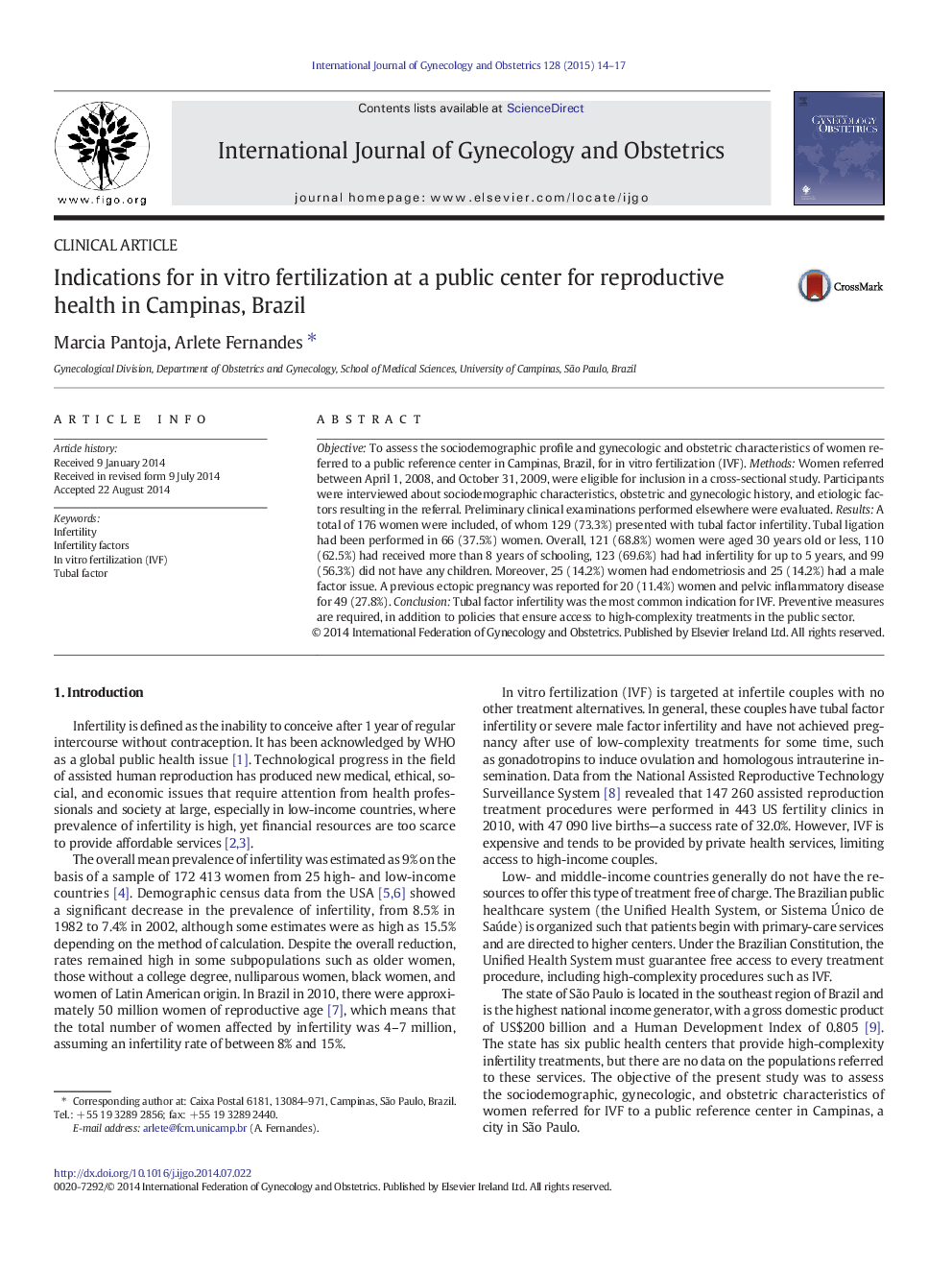| Article ID | Journal | Published Year | Pages | File Type |
|---|---|---|---|---|
| 3948542 | International Journal of Gynecology & Obstetrics | 2015 | 4 Pages |
ObjectiveTo assess the sociodemographic profile and gynecologic and obstetric characteristics of women referred to a public reference center in Campinas, Brazil, for in vitro fertilization (IVF).MethodsWomen referred between April 1, 2008, and October 31, 2009, were eligible for inclusion in a cross-sectional study. Participants were interviewed about sociodemographic characteristics, obstetric and gynecologic history, and etiologic factors resulting in the referral. Preliminary clinical examinations performed elsewhere were evaluated.ResultsA total of 176 women were included, of whom 129 (73.3%) presented with tubal factor infertility. Tubal ligation had been performed in 66 (37.5%) women. Overall, 121 (68.8%) women were aged 30 years old or less, 110 (62.5%) had received more than 8 years of schooling, 123 (69.6%) had had infertility for up to 5 years, and 99 (56.3%) did not have any children. Moreover, 25 (14.2%) women had endometriosis and 25 (14.2%) had a male factor issue. A previous ectopic pregnancy was reported for 20 (11.4%) women and pelvic inflammatory disease for 49 (27.8%).ConclusionTubal factor infertility was the most common indication for IVF. Preventive measures are required, in addition to policies that ensure access to high-complexity treatments in the public sector.
